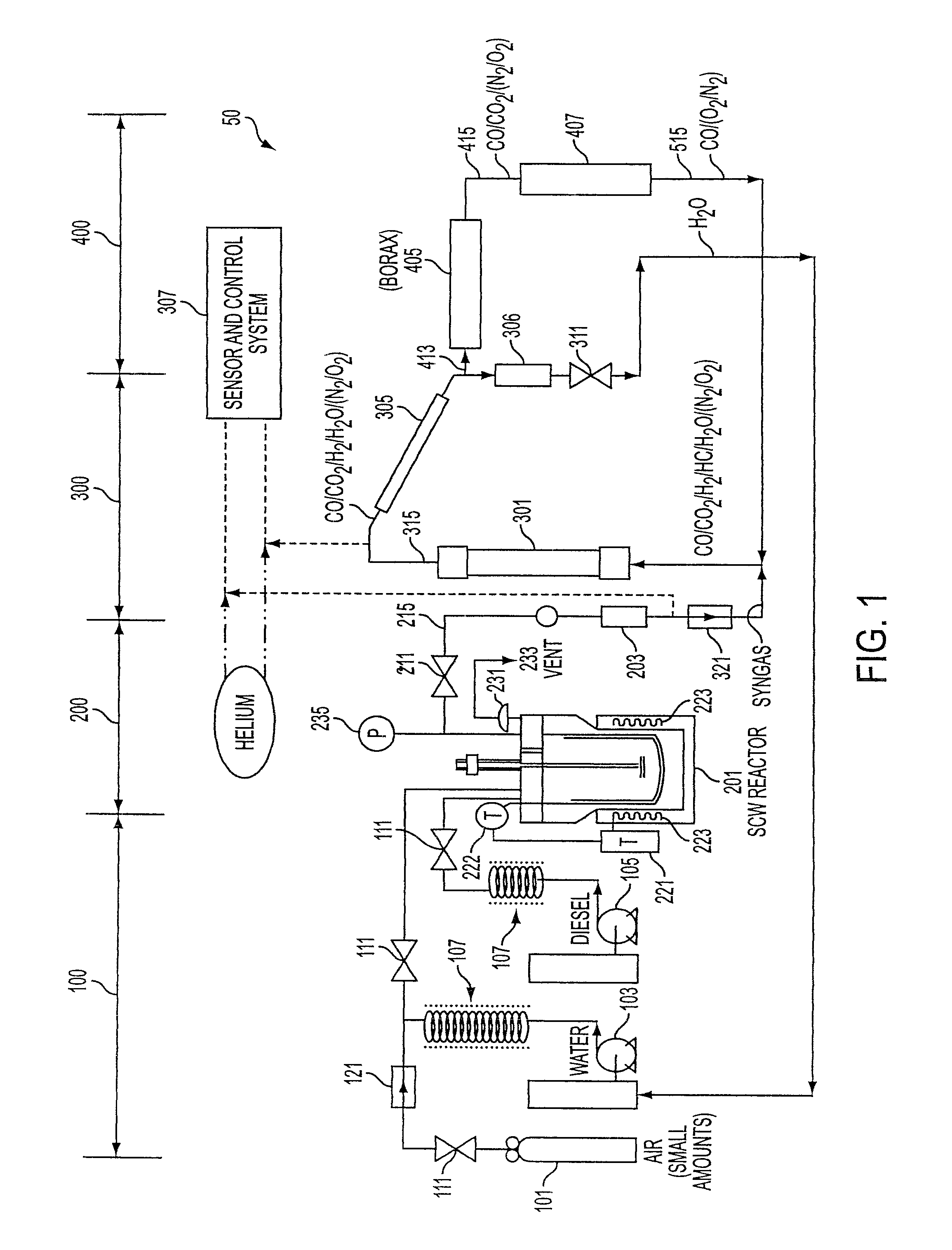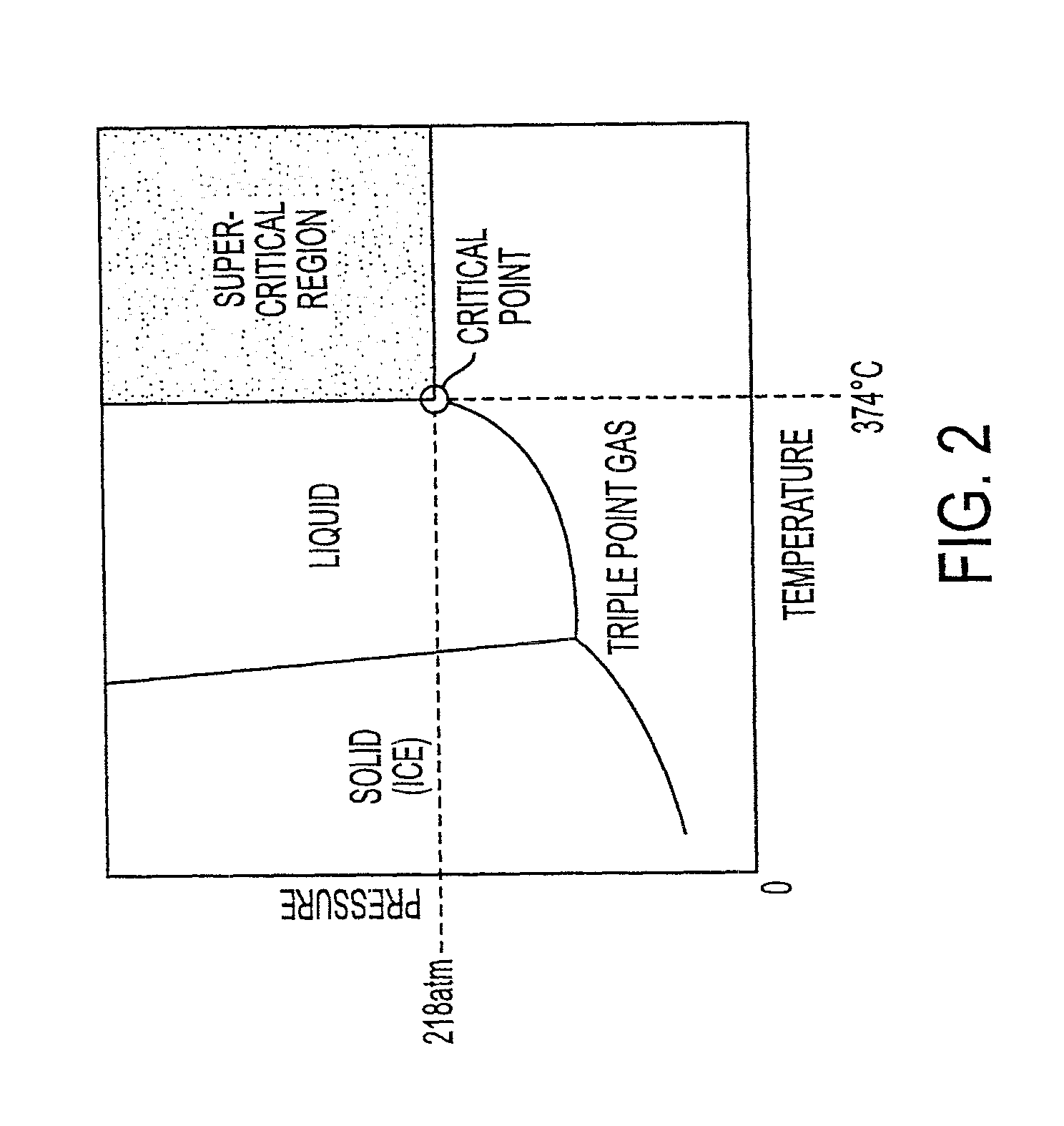Methods for supercritical water reformation of fuels and generation of hydrogen using supercritical water
a supercritical water and hydrogen technology, applied in the direction of supercritical condition processes, physical/chemical process catalysts, bulk chemical production, etc., can solve the problems of requiring a very high temperature (850° c), requiring expensive catalysts such as platinum or nickel to be effective, and simply requiring too specialized materials and transportation infrastructure to be utilized efficiently
- Summary
- Abstract
- Description
- Claims
- Application Information
AI Technical Summary
Benefits of technology
Problems solved by technology
Method used
Image
Examples
Embodiment Construction
)
[0024]Disclosed herein, among other things, is a method for using a supercritical water reformer (SCWR) for use in converting fuels into hydrogen. The operation of the SCWR utilizes a supercritical water (SCW) reactor in conjunction with other hydrogen harvesting and generation apparatus to produce a portable hydrogen generation system for use to generate hydrogen from hydrocarbons including hydrocarbon fuels.
[0025]The terms “fuels” or “hydrocarbon fuels” as used herein is intended to be a general term relating to liquid hydrocarbons generally used as fuel in motor vehicles, generators, or other internal combustion engine powered devices. However, fuels include all liquid hydrocarbons generally of the chemical formula CnHm where n and m may be any value. This specifically includes, but is not limited to hydrocarbons classified as paraffins (CnH2n+2), naphthenes (CnH2n), olefins (CnH2n), and aromatics (CnH2n−6). Fuel is also occasionally used to refer to the use of hydrogen as fuel ...
PUM
| Property | Measurement | Unit |
|---|---|---|
| temperature | aaaaa | aaaaa |
| critical temperature | aaaaa | aaaaa |
| critical temperature | aaaaa | aaaaa |
Abstract
Description
Claims
Application Information
 Login to View More
Login to View More - R&D
- Intellectual Property
- Life Sciences
- Materials
- Tech Scout
- Unparalleled Data Quality
- Higher Quality Content
- 60% Fewer Hallucinations
Browse by: Latest US Patents, China's latest patents, Technical Efficacy Thesaurus, Application Domain, Technology Topic, Popular Technical Reports.
© 2025 PatSnap. All rights reserved.Legal|Privacy policy|Modern Slavery Act Transparency Statement|Sitemap|About US| Contact US: help@patsnap.com



